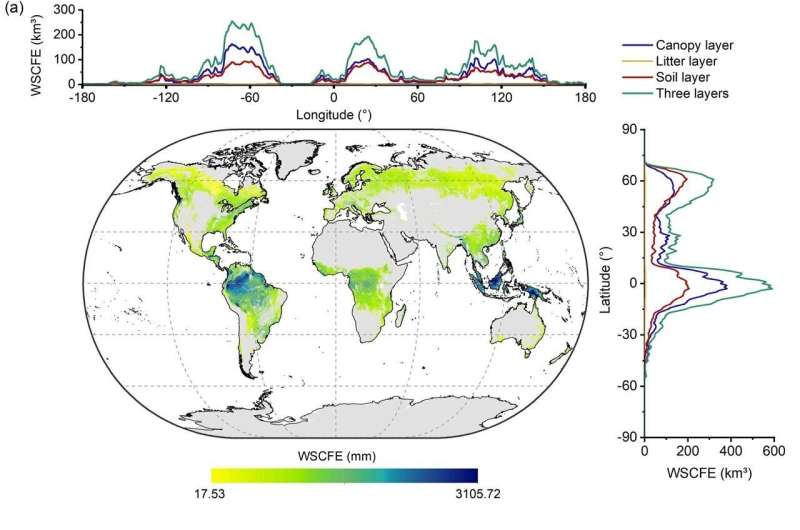This article has been reviewed according to Science X's editorial process and policies. Editors have highlighted the following attributes while ensuring the content's credibility:
fact-checked
peer-reviewed publication
trusted source
proofread
Researchers provide global synthesis of multiple factors affecting forest ecosystem water storage capacity

Water storage capacity of the forest ecosystem refers to the precipitation that can be intercepted and stored by the forest canopy, litter, and soil layers, accounting for more than 25% of the terrestrial water cycle.
Water storage capacities of different forest layers are affected by different natural driving factors, but their global patterns have not been fully understood.
Based on the literature data extracted by the meta-analysis method and the spatial, researchers led by Prof. Shi Wenjiao and Prof. Tao Fulu from the Institute of Geographic Sciences and Natural Resources Research of the Chinese Academy of Sciences have quantified three important water storages of the canopy layer, litter layer, and soil layers in the forest ecosystems related to water regulation services, and revealed the effects of individual drivers and multiple drivers on each storage layer.
The findings were published in Geophysical Research Letters.
The researchers found that the global forest water storage capacity decreased from low latitude to high latitude, from coast to inland, and from mountains to plains.
Five types of driving factors (terrain factors, climatic factors, forest attributes, litter characteristics, and soil physical properties) explained 89% variance of the water storage capacity. Among them, climate factors had the greatest and most positive influence on forest water storage capacity. In different forest types, precipitation, tree height, and soil capillary porosity showed synergic relationships with water storage capacity, while evapotranspiration had an inhibitory effect on water storage capacity in all forest types.
The quantification of three important water storages provides a basis to delineate global water regulation zones. The key factors affecting forest water storage capacity should be considered in the formulation of protection policies for ecological functional areas.
This study provides data for the calibration of terrestrial hydrological models and the analysis of factors affecting forest water storage at the global scale.
More information: Yexuan Liu et al, A Global Synthesis of Multi‐Factors Affecting Water Storage Capacity in Forest Canopy, Litter and Soil Layers, Geophysical Research Letters (2023). DOI: 10.1029/2022GL099888
Journal information: Geophysical Research Letters
Provided by Chinese Academy of Sciences




















